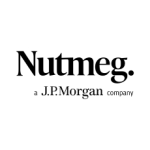Investment Focus: Gilliat new launch offering a potential 34.5% annual returns
Depending on which of the two investment options is selected, the latest launch from Gilliat offers investors the potential for either 15.85% or 34.5% per year, along with the ability to mature early or ‘kick out’ each year from the end of year one onwards. As the plan name suggests, the returns on offer from the 3 Stock Dual Option Kick Out plan are dependent on the performance of three FTSE 100 listed shares and as such, should be considered by experienced investors only. With the potential for such high headline returns, we take a closer look at how this new investment plan works in order to better understand the risk versus reward.
New launch
Investment plans that have the ability to mature early each year or ‘kick out’ are popular with investors in all market conditions, especially when they can mature from the first year onwards. These investments also seem to gain increased interest when the stock market is at historically high levels since they are often structured in a way that can produce competitive returns even if the market stays relatively flat, or indeed goes down – and this is exactly what the latest launch from Gilliat offers investors.
Plan snapshot
The 3 Stock Dual Option Kick Out plan offers the potential for high returns depending on the performance of three FTSE 100 shares. Investors have two options, the difference between them being the level all three shares have to be in order for the plan to make a growth payment along with a return of your original investment.
For those targeting the higher return of 34.5%, all three shares must be at or above their levels at the start of the investment whilst the required value of the shares reduces throughout the term of the plan for the lower headline return of 15.85%. If the plan does not kick out at all, the return of your initial capital is also dependent on the performance of the same three shares with your capital at risk if one or more shares is more than 50% lower than its starting value at the end of the investment term.
Higher risk
Therefore, the most important feature of this investment plan to consider is that the potential returns on offer, as well as what happens to your initial investment, are both dependent on the performance of shares rather than the FTSE 100 Index. This makes it a higher risk investment than one based on the Index itself as your investment return is dependent on the performance of individual shares rather than a broader exposure to the UK stock market as a whole offered by the Index.
Greater rewards
The principle of risk versus reward means that the upside of taking on more risk is that the potential rewards are greater, which is indeed the case with this investment. The headline returns are not compounded, but will be paid for each year the investment has been in place. This investment therefore offers the potential for greater rewards than would be on offer if the plan was dependent on the performance of the FTSE 100 Index.
Looking at each element of the plan name in turn:
Kick Out
The term ‘kick out’ refers to the ability of the investment plan to mature early depending on the movement of the three shares. The 3 Stocks Dual Option Kick Out plan has the potential to mature at the end of each year from the end of year one onwards, provided all three shares meet the required levels.
3 Stocks
The three shares are the bank Barclays PLC, the pharmaceutical company GlaxoSmithKline PLC and the mobile telecommunications company Vodafone Group PLC. The closing levels of the shares are taken on 4th July 2014. These are then taken again at the end of each year (known as the Kick Out Observation Date) by averaging the closing level of each share for the six days up to and including the annual kick out date. Should one or more of the shares be under the required level, the plan will continue to the following year.
Dual Option
The required level of the shares depends on the investment option selected. Investment option one which offers the higher headline return of 35.4% growth each year (not compounded), requires the level of each share at the end of all six years to be at or above their level at the start of the plan. Investment option two offering a potential 15.85% a year (not compounded) adds a defensive element since the required level of each share at the end of each year decreases, starting at 90% at the end of years one and two, reducing to 80% at the end of years three to five and then reducing to 70% in the final year.
For both investment options, if all three shares are at or above the required levels, the plan will mature and the growth payment will be made along with a return of your initial investment. But if one or more share are below their starting level, you will not receive any growth on your investment.
Some capital protection from falling share prices
If the plan fails to kick out the return of your initial capital is also dependent on the same three shares. On the final day of your investment should the value of the lowest performing share be less than 50% of its value at the start of the plan, your initial capital will be reduced by 1% for each 1% fall. It should be noted that in this situation, you would lose at least 50% of your initial capital, so although the 50% barrier provides some capital protection from falling share prices, there is the risk that you could lose some or all of your initial capital.
Risk versus reward
The principle of risk v reward means that the search for potentially higher returns inevitably leads to the need to put your capital at greater risk. One benchmark for assessing this investment plan is to compare what you could get from a kick out plan that uses the FTSE 100 Index as the underlying investment and then consider whether you are comfortable with the additional risk you are taking in order to receive the potentially higher return.
Investment plans which use the FTSE 100 Index as the underlying investment are more common since the Index is the most quoted benchmark for the performance of the UK stock market and better understood as a yardstick by investors. At present there are no FTSE 100 linked kick out investment plans that offer the opportunity to mature at the end of year one, whilst those that can kick out from year 2 onwards are offering up to 9.75% annual growth. Those with a defensive element (i.e. the required FTSE level reduces during the plan) are offering up to 7.6%. The 3 Stock Dual Option Kick Out plan therefore offers the potential for considerably higher returns, which also helps to put into context the additional risk being taken.
Backtesting
Backtesting is statistical research which uses hypothetical products with identical terms to this investment plan and considers how they would have performed had they been launched since October 1991. This gives a total of 4,151 different hypothetical products to see how they would have performed. This analysis shows that for investment option one a kick out did not occur 26.16% of the time and that at least half of the initial investment was lost in 15.27% of occasions. For investment option two, a kick out did not occur in 43.39% of cases and at least half of the initial investment was lost in 21.46% of cases. When either investment option did kick out, most occurred in the first couple of years.
Please note that this analysis is simulated and is not a guarantee of future performance. It should not be used to assess the future returns or risks associated with the plan.
Morgan Stanley as counterparty
Unlike a fund, this plan uses your investment to purchase securities issued by Morgan Stanley and so their ability to be able to meet their financial obligations become an important consideration. This is known as counterparty risk (or credit risk) and means that in the event of Morgan Stanley going into liquidation, you could lose some or all of your initial investment as well as the payment of any growth return. In this event you would not be entitled, for this reason alone, to compensation from the Financial Services Compensation Scheme (the ‘FSCS’).
Credit ratings and agencies
One accepted method of determining the credit worthiness of a counterparty is to look at credit ratings issued and regularly reviewed by independent companies known as ratings agencies. Standard and Poor’s is a leading credit ratings agency and as at 15th April 2014, Morgan Stanley has been attributed an ‘A-‘ rating with a negative outlook. The ‘A’ rating denotes a strong capacity to meet its financial commitments but could be more susceptible to adverse economic conditions than companies in higher-rated categories while the ‘-‘ signifies it is at the lower end of this rating grade. The negative outlook indicates that the rating may be lowered in the short to medium term (between 6 months to 2 years).
Experienced investors
The fact that any growth payment and the return of your initial investment is dependent on the performance of three shares, means this plan is higher risk than one which is dependent on the performance of the FTSE 100 Index, or a collective fund which invests in a much larger number of shares. The 3 Stocks Dual Option Kick Out plan is therefore aimed at those investors who have sufficient knowledge and experience of the stock market and putting their capital at risk to understand the risks and merits involved with this investment. As such, this investment plan is featured in our experienced investor section.
Fair Investment conclusion
The headline returns on offer from this plan are some of the highest seen from this type of investment but the principle of risk versus reward tells us that this is therefore a high risk investment. As with any investment, it is important to fully understand how the plan works and the risks that one takes on prior to committing out capital.
Oliver Roylance-Smith, head of savings and investments at Fair Investment Company, commented on the plan: “With the potential for such high investment returns it is crucial that investors look carefully at the risks involved and satisfy themselves that they are prepared to risk losing their capital. There is a sizeable difference between the risk and reward of the two investment options and the ability for each share to finish at a lower level offered by investment option two is a compelling feature. However, the fact that any growth and the return of your capital are both dependent on the performance of three shares rather the FTSE 100 Index should be a key consideration”.
The plan is open for new ISA investments (2014/15 current limit of £11,880) ISA transfers and non-ISA investments.
Click here for more information about the Gilliat 3 Stocks Dual Option Kick Out Plan »
No news, feature article or comment should be seen as a personal recommendation to invest. Prior to making any decision to invest, you should ensure that you are familiar with the risks associated with a particular investment. If you are at all unsure of the suitability of a particular investment, both in respect of its objectives and its risk profile, you should seek professional advice. Tax treatment of ISAs depends on your individual circumstances and may be subject to change in the future. ISA transfer charges may apply – please check with your ISA provider.
This is a structured investment plan that is not capital protected and is not covered by the Financial Services Compensation Scheme (FSCS) for default alone. Returns are not guaranteed and there is a risk of losing some or all of your initial investment due to the performance of three FTSE 100-listed shares. As share prices can move by a wide margin this plan represents a higher risk investment than one based on the FTSE 100 Index as a whole.
There is a risk that the company backing the plan or any company associated with the plan may be unable to repay your initial investment and any returns stated. In addition, you may not get back the full amount of your initial investment if the plan is not held for the full term. The past performance of shares listed on the FTSE 100 Index is not a guide to their future performance.
Tags





